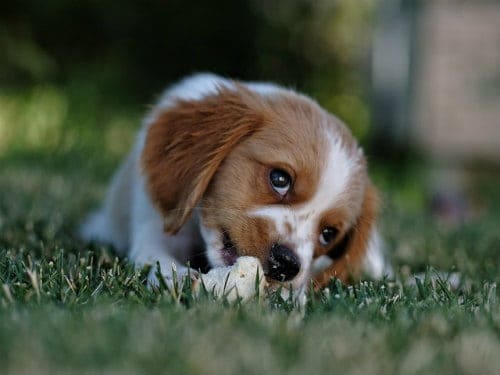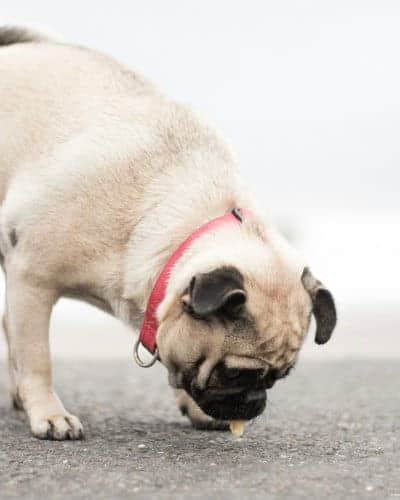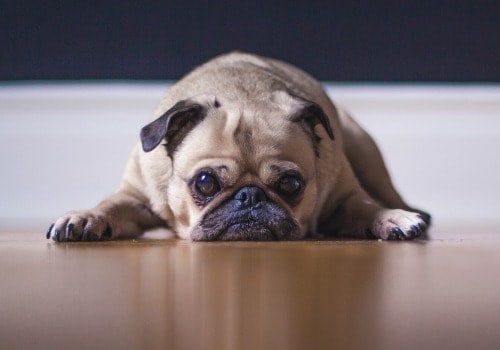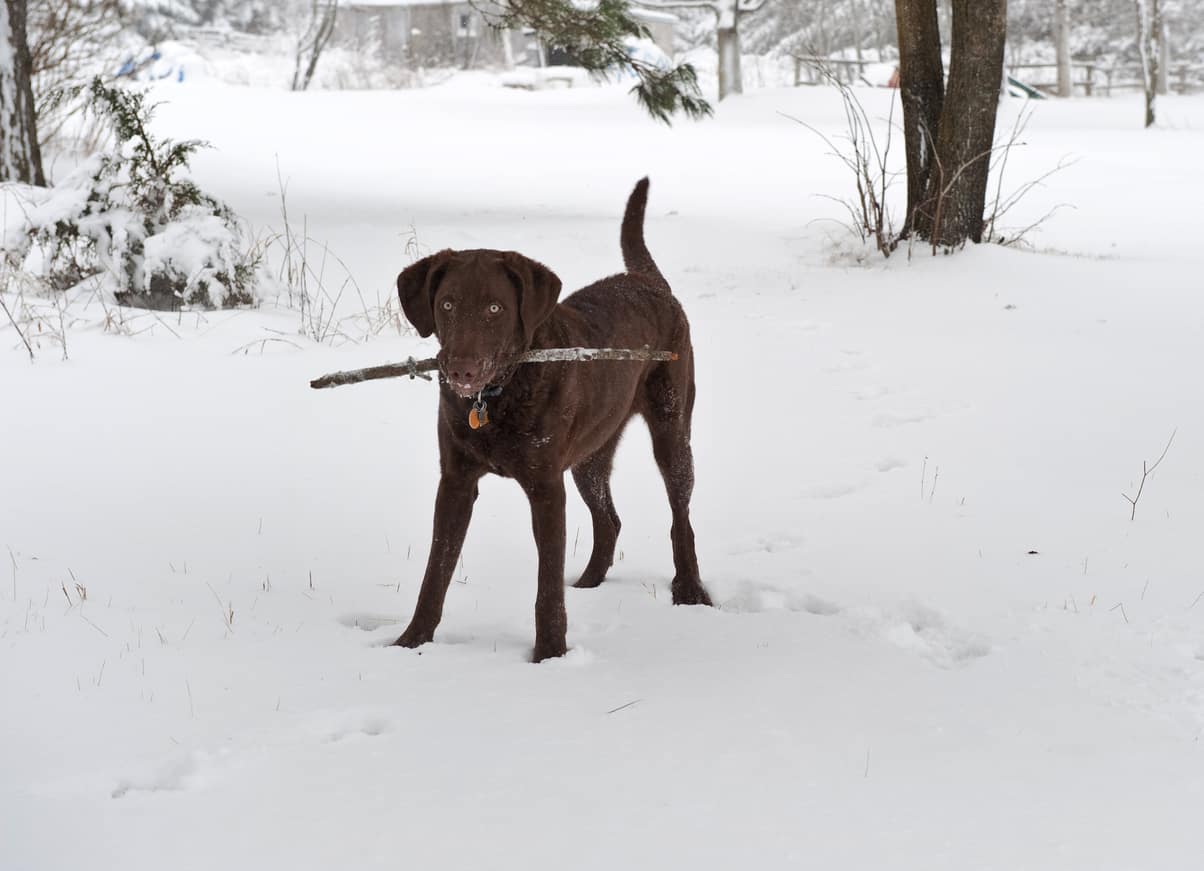We love our dogs and want to see them thriving, happy and healthy at all times. So when you fill your pup’s food bowl and observe it untouched hours later, it’s natural to feel frustrated, confused and worried, especially if your dog is usually a voracious eater. What could be causing this loss of appetite and what can you do about it?
There’s no one-size-fits-all solution to your dog’s distaste for food. It could be the result of illness, anxiety, discomfort or simply a picky palate. Each of these causes has its own unique solutions, so in order to fix the problem, you first need to identify the root.
If this seems daunting, never fear: we’re about to go over all the possible causes of low appetite in dogs and help you figure out what to do next. Read on and find out how to restore your dog’s desire to eat – and prevent it from fading in the future.
Food Fundamentals: Dog Food Basics
Counting Calories

Before delving into the world of dog health and behavior, it’s important to make sure that your dog is actually not eating enough. Just because there’s food left over after dinner doesn’t mean that there’s a problem; in fact, many portion guidelines found on dog food packaging are unnecessarily large. If you’re following these (and even if you’re not) it’s highly recommended that you calculate your dog’s individual nutritional requirements and feed accordingly.
Your vet can analyze your dog’s body composition and activity level to determine how many calories it needs to consume each day, or you can use an online calculator at home. You’ll need to know your dog’s breed, weight, age, and activity level to perform an accurate estimate. Larger and more active dogs need more calories than smaller, more sedentary dogs, while overweight dogs need fewer calories in order to lose weight.
Portion Control
Once you know how many calories your dog needs, check the label on the food to find out how many calories are in one portion (often measured by the cup). If it turns out you’re putting too much food in the bowl, you can scale back on the portion size and stop feeding your dog more than it needs – or wants. Sometimes a dog is just too full to finish its meal.
However, if you’ve done your calculations and your dog still isn’t eating as much as it should or isn’t eating at all, keep reading to find out why.
Unhealthy Appetites: Medical Reasons Why Your Dog Won’t Eat
Periodontal Disease

Issues with the teeth, tongue, and gums are all too common in dogs. A dog’s mouth is one of the most frequently used parts of its body, involved not just in eating but in grooming, socializing, playing, and working. It’s well-equipped for all of these uses, but they leave it vulnerable to all sorts of damage and diseases that can impact the dog’s desire and ability to eat.
Periodontal disease, also known as gum disease, is one of the most common afflictions that dogs experience. Up to 80% of dogs will have some form of periodontal disease by the time they’re three years old. The two most common forms of dental disease in dogs are gingivitis and periodontitis; both are caused by plaque and tartar.
Dogs get plaque on their teeth from eating and breathing just like humans do. It’s made up of bits of food, debris, and bacteria that coalesce into a slimy, often yellowish film on the teeth, especially around the gum line. As plaque builds up on a dog’s teeth, it hardens into tartar as it’s exposed to minerals from water and saliva; unlike plaque, which can be brushed off easily, tartar adheres to the teeth and is much tougher to remove.
Tartar eventually begins to dig into the gums, opening them up to infection. Because they’re so close to the plaque, bacteria from the plaque move into the gums very quickly, causing swelling, redness, bleeding, and pain. This type of infection is known as gingivitis.
As the gingivitis infection progresses, it begins to destroy the roots of the teeth, causing immense pain and inflammation. The dog’s immune system sends white blood cells to fight it off, resulting in an abscess filled with pus. Severe dental infection such as this is called periodontitis and often ends up killing one or more teeth, which then need to be removed by a vet.
Regardless of the specific condition, periodontal disease causes foul breath and mouth pain. The pressure needed to chew food can be particularly painful when abscesses are present under the teeth, causing an afflicted dog to avoid eating altogether. If your dog isn’t eating, examine its teeth and gums; if you notice a lot of tartar buildup or red, swollen gums, it’s likely that periodontal disease is the culprit.
You’ll want to take your dog to the vet if you suspect it has periodontal disease. The vet will be able to prescribe antibiotics, provide a thorough dental cleaning and remove any dead or dying teeth if needed. If your dog usually eats dry food, you may want to switch to wet food until the infection clears up to minimize chewing and related pain.
To prevent periodontal disease, brush your dog’s teeth once a day to remove plaque buildup, and prevent tartar from forming. It’s best to start doing this when your dog is still a puppy so it grows up accustomed to the procedure. Still, it’s never too late to start; your vet can give you tips on getting your dog used to the toothbrush in addition to providing an annual dental cleaning in-office.
Tooth or Tongue Injury

Sometimes dental problems are caused by injury rather than infection. Rough play or a chomp on an unexpectedly hard object can result in a chipped, cracked or dislodged tooth. Similarly, a sharp object or splinter can injure the tongue – a problem faced by many a lick-happy dog.
It’s usually pretty easy to tell when there’s physical injury to a dog’s mouth. Look for blood or lacerations on the tongue and cracks or chips on the teeth. If anything looks amiss, chances are that’s why your dog isn’t eating: it’s just too painful to chew.
The tongue usually heals itself quickly, but if the symptoms persist for longer than a day or two, see a vet. Damaged teeth are more serious and need to be examined by a vet to determine if extraction is necessary.
GI Tract Diseases
Many diseases and parasites affect the gastrointestinal (GI) tract, which is comprised of the esophagus, stomach, intestines, and bowels. One of the most common causes of poor appetite is a parasitic infection, mainly tapeworms. They live in the GI tract and sap nutrients from your dog’s body and any food it eats, resulting in vomiting, diarrhea, and loss of appetite.
Various bacterial and viral infections can also affect the digestive system. These can range in severity from the common cold to gastroenteritis to rotavirus infection, but the loss of appetite is a very common symptom. If the dog’s digestive system is in pain, it will avoid eating in order to prevent any further irritation.
Because there are so many different causes of GI tract disease, diagnosis and treatment need to be performed by a vet. Testing will determine the cause and nature of the condition and dictate the appropriate treatment. This may involve medication, IV fluids, hospitalization, a special diet, or, in severe cases, surgery.
Cancer and Other Serious Illnesses
Low or no appetite is often one of the earliest symptoms of cancer, liver disease, and kidney failure. If your dog’s lack of appetite is accompanied by weight loss, lethargy, severe vomiting or diarrhea, unusual behavioral changes or strange lumps or growths, seek immediate veterinary attention. These diseases are severe but can often be treated if detected in the early stages.
Side Effects from Surgery and Medication

It’s normal for a dog to have a low appetite after undergoing surgery, receiving a vaccination or while taking certain medications such as painkillers and some antibiotics. Before performing an operation or prescribing medication, your vet will be happy to go over this and other potential side effects with you. Generally, lack of appetite post-operation improves after a few days to a week, while medication-related appetite problems subside shortly after treatment stops; if you’re concerned, call your vet or pet pharmacist.
All In Your Head: Behavioral Reasons Why Your Dog Won’t Eat
Stress and Anxiety
Dogs feel stress and anxiety just like we do, and in many of the same situations that provoke these feelings in us. Moving to a new home, a recent death or other loss, meeting a new family member and even secondhand stress from others can all make your dog more anxious than normal.
Anxiety is sometimes tough to pin down because it manifests so differently from dog to dog. One dog may become lazy, opting to lay on the couch and stress-eat all day when tension runs high. For another dog, anxiety can result in restlessness, heightened alertness and a loss of interest in food.
If your dog has gone through any big changes recently, anxiety could very well be the cause of its decreased appetite. However, smaller changes can cause stress too, and these may be tougher to pinpoint. Sometimes seemingly insignificant things can have a big impact on a dog’s mental state, from a new chair in the living room to a change in your walking schedule to your new haircut.
Try to see the world from your dog’s point of view. Look and listen for things you may not have noticed in your day-to-day activity; remember that a dog’s ears can pick up far more than ours, so listen hard for new noises that may be bothering your pup. If the anxiety doesn’t subside within a few days or if you can’t identify or alter the stressor, a vet may be able to prescribe some anti-anxiety medication to alleviate the symptoms and hopefully restore your dog’s appetite.
Pickiness
Just like humans, some dogs simply aren’t adventurous when it comes to food. They know what they like, and nothing but the best will do. Dogs are often stereotyped as eating anything and everything, so it can seem strange that your dog is willing to eat your shoes but not the expensive kibble you bought.
Pickiness often arises from good intentions, namely the sharing of table scraps. Loaded with calories and flavor, table scraps are often irresistible to dogs, and it’s tempting to toss your dog a piece of food from your plate at dinnertime in order to see those happy reactions. But dogs quickly develop a taste for “people food” and once they get accustomed to it, they want nothing to do with their plain old kibble.
You can avoid this problem by resisting the urge to feed your dog table scraps, to begin with. Those puppy dog eyes are tough to ignore, but your dog simply doesn’t know what’s best for its diet. If your dog is already hooked on people-food, quitting cold turkey is the best option; eventually, your dog will realize that the scraps aren’t coming and reluctantly return to its food bowl.
Sometimes pickiness has a physical root cause: food sensitivity or allergy. The symptoms of these are often unnoticeable by us, but the dog feels them after eating the wrong kind of food. Upset stomach, indigestion, burning or tingling may occur without anyone noticing.
Common food sensitivities include gluten, artificial colorings, and preservatives. Foods without these ingredients used to be difficult to find but are now widely available in pet stores. If your dog is constantly turning its nose up at its dinner, give one of these natural, organic or gluten-free foods a try and see if it pleases your pup’s palate – and stomach.
And sometimes a certain food just doesn’t taste good. Everyone’s got their dietary preferences, and as good as that new food you bought sounded to you, your dog may simply disagree. Finding the right dog food is a matter of trial and error, but eventually, you’ll find something that your dog will be begging for day and night as if its appetite had never left.



My dog recently had his teeth cleaned. Since then he wants to eat a lot more. Is this because his mouth feels better since his teeth cleaning. And he can eat better. Has anybody ever had this happen with their dog?